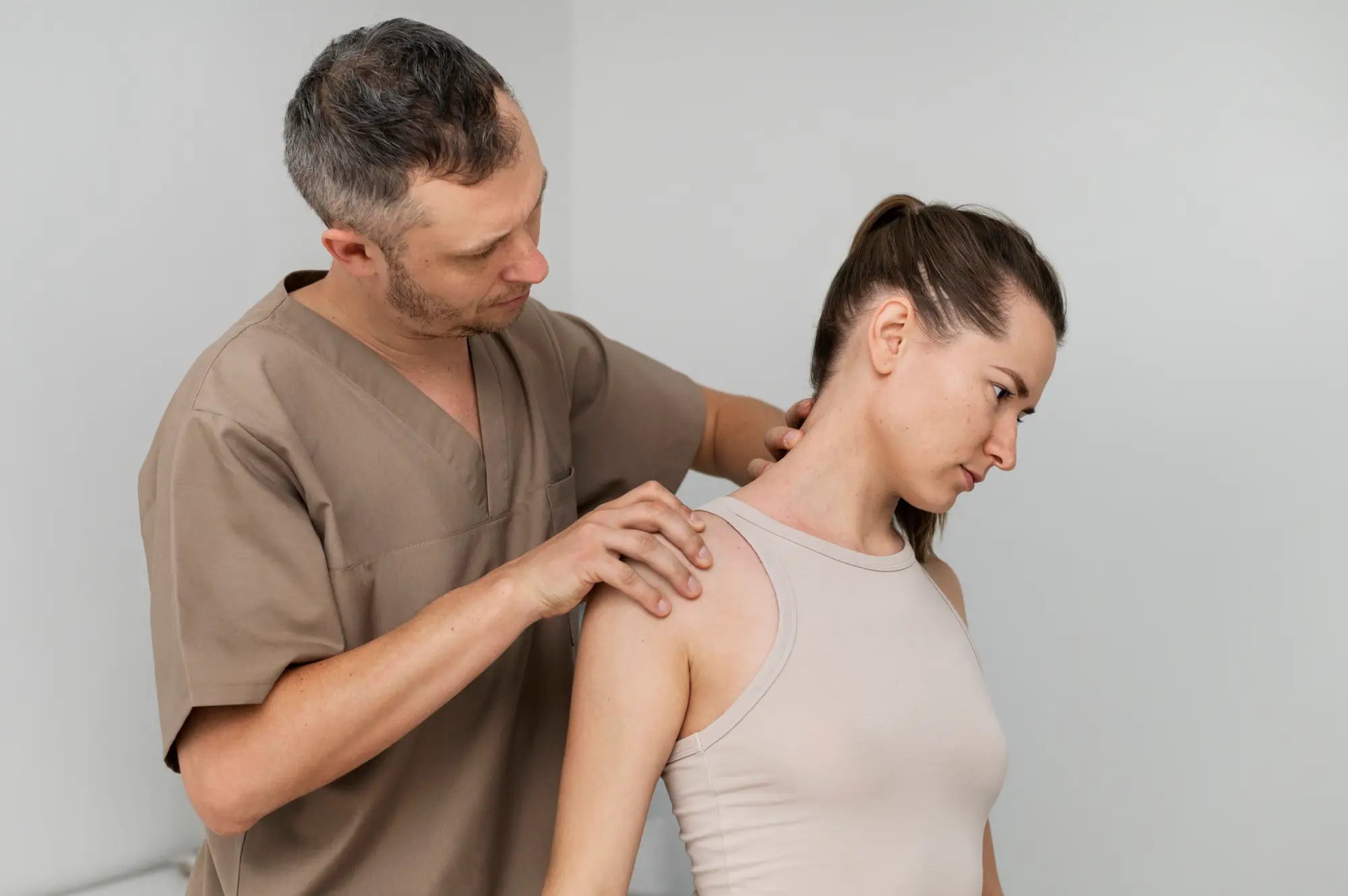
Knee and joint pain can be frustrating and life-limiting. Whether it’s from injury, arthritis, or overuse, this type of pain can affect daily activities like walking, climbing stairs, or even sitting comfortably. Thankfully, an orthopedic doctor for knee and joint pain can help. These doctors are trained experts in treating problems related to bones, joints, ligaments, and muscles.
In this article, we’ll explain who orthopedic doctors are, what they do, and when you should see one. We’ll also look at common knee and joint conditions and the treatment options available.
What Is an Orthopedic Doctor?
An orthopedic doctor is a medical professional who specializes in diagnosing and treating problems with the musculoskeletal system. This includes:
- Bones
- Joints
- Muscles
- Tendons
- Ligaments
- Cartilage
They treat a wide range of issues, from simple sprains to complex joint problems, and are trained to help people regain movement and reduce pain.
Orthopedic doctors can be either surgeons or non-surgeons. Some treat conditions through medications and physical therapy, while others perform surgeries like knee replacement or joint repair.
Why Do People Visit Orthopedic Doctors for Knee and Joint Pain?
People often go to an orthopedic doctor when pain affects their daily routine or doesn’t improve with home treatment. Knee and joint pain can come from many sources, including:
- Injuries from sports or accidents
- Aging and wear-and-tear (osteoarthritis)
- Inflammatory diseases like rheumatoid arthritis
- Repetitive movement or overuse
- Bone misalignment or cartilage damage
If the pain is lasting more than a few days, limiting your movement, or getting worse, it’s time to consult an orthopedic specialist.
Common Knee and Joint Problems Treated by Orthopedic Doctors
Orthopedic doctors deal with many types of knee and joint problems. Below are some common conditions:
1. Osteoarthritis
This is the most common joint issue, especially in older adults. It happens when the cartilage that cushions the joints wears away. People feel pain, stiffness, and sometimes swelling in the knees, hips, or hands.
2. Rheumatoid Arthritis
This is an autoimmune disease where the body’s immune system attacks its own joints. It causes pain, swelling, and can lead to joint deformity.
3. Ligament Injuries
Injuries like ACL (anterior cruciate ligament) tears often happen during sports. These injuries can cause severe knee instability and may require surgery.
4. Meniscus Tears
The meniscus is a cartilage in the knee that helps with movement and balance. Twisting the knee suddenly can lead to a tear, especially in athletes.
5. Bursitis
This condition happens when small fluid-filled sacs in the joints (bursae) become inflamed. It can cause pain and limit movement.
6. Tendonitis
Tendons connect muscles to bones. When they become inflamed, you may feel pain in the joints. This often happens with overuse or repetitive activity.
When Should You See an Orthopedic Doctor for Knee and Joint Pain?
Here are clear signs you need to consult an orthopedic doctor:
- Pain that lasts more than a few weeks
- Swelling or warmth around the joint
- Difficulty standing, walking, or bending the joint
- Joint stiffness in the morning
- Clicking or grinding sounds in the joint
- Previous injury that hasn’t healed
- Deformity or unusual shape of the joint
It’s better to treat joint problems early before they become worse or lead to long-term damage.
What to Expect During a Visit
When you visit an orthopedic doctor, they will start with:
1. Medical History
They will ask about your symptoms, when they started, any past injuries, and how the pain affects your life.
2. Physical Exam
The doctor may move your joint to check for swelling, strength, range of motion, and pain points.
3. Tests
They may ask for X-rays, MRIs, CT scans, or blood tests to get a closer look at the joint and rule out other issues.
After understanding your condition, they will make a diagnosis and suggest a treatment plan.
Treatment Options by Orthopedic Doctors
The good news is that many types of joint and knee pain can be treated without surgery. Orthopedic doctors usually suggest the least invasive treatments first.
1. Medications
Pain relievers, anti-inflammatory drugs, and joint supplements can reduce pain and swelling.
2. Physical Therapy
Exercises can strengthen muscles around the joint and improve flexibility and balance. This often leads to reduced pain and better movement.
3. Steroid Injections
Injections in the joint can provide relief from pain and inflammation, especially for arthritis or bursitis.
4. Bracing and Support
Using a knee brace or joint support can help stabilize the joint and reduce stress on it.
5. Lifestyle Changes
Doctors may advise weight loss, posture improvement, or changes in activity level to prevent further joint damage.
When Surgery Is Needed
Sometimes, non-surgical treatments don’t help, and surgery becomes necessary. Common surgical options include:
● Arthroscopy
A small camera is used to see and repair the joint through tiny cuts. This is used for meniscus tears, ligament repair, or removing damaged cartilage.
● Joint Replacement
In severe arthritis cases, the damaged part of the joint is replaced with an artificial part. Knee and hip replacements are very common and help people return to normal life.
● Osteotomy
In this procedure, the bone is cut and reshaped to reduce stress on the joint. It is often used in younger patients with early arthritis.
Recovery and Follow-Up Care
Recovery after treatment depends on the problem and whether surgery was involved. Orthopedic doctors provide follow-up care to make sure healing goes smoothly. They may suggest:
- Regular check-ups
- Ongoing physiotherapy
- Pain management plans
- Home exercise routines
A good orthopedic doctor will support you at every stage of healing.
How to Choose the Right Orthopedic Doctor
Choosing the right orthopedic doctor for knee and joint pain is important. Here are some tips:
- Experience: Look for a doctor who has treated many patients with similar problems.
- Specialization: Some doctors focus on certain joints like knees or hips.
- Communication: You should feel comfortable asking questions.
- Hospital/Clinic Quality: Good facilities usually mean better care.
- Reviews or Recommendations: Ask friends, family, or check online reviews.
Final Thoughts
Knee and joint pain can make daily life uncomfortable and limit your freedom. But you don’t have to live with pain forever. A qualified orthopedic doctor for knee and joint pain can help you find relief and restore your quality of life.
With the right care, many people can manage or even fully recover from joint problems. Whether through medication, physical therapy, or surgery, the goal is always the same: to help you move better and live without pain.
If you or someone you know is suffering from long-lasting joint or knee pain, don’t ignore it. Make an appointment with an orthopedic doctor and take the first step toward a pain-free life.
FAQs
Q1: What does an orthopedic doctor do for knee pain?
An orthopedic doctor checks your knee, finds the cause of the pain, and gives treatment like medicine, exercises, or surgery.
Q2: Is knee pain always serious?
Not always, but if the pain lasts more than a few days or gets worse, you should see a doctor.
Q3: Can knee pain go away without treatment?
Mild pain may go away with rest, but if it returns often, you need medical help.
Q4: What is the best treatment for joint pain?
Treatment depends on the cause. It may include pain relievers, exercises, joint injections, or surgery.
Q5: When should I see an orthopedic doctor for joint pain?
You should see a doctor if the pain is strong, lasts more than two weeks, or affects your movement.





